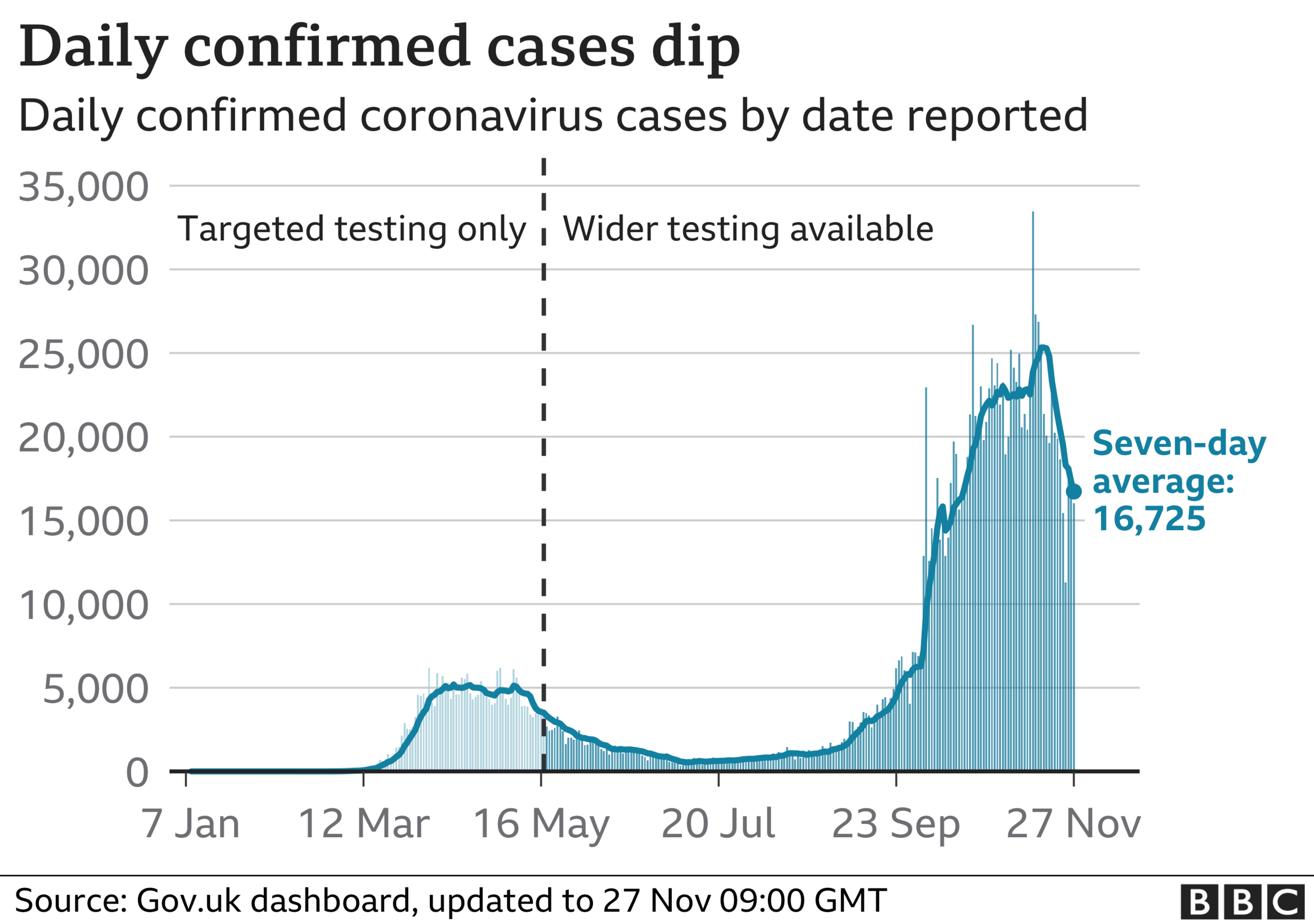R number for UK below 1 for first time since August
- Published
- comments
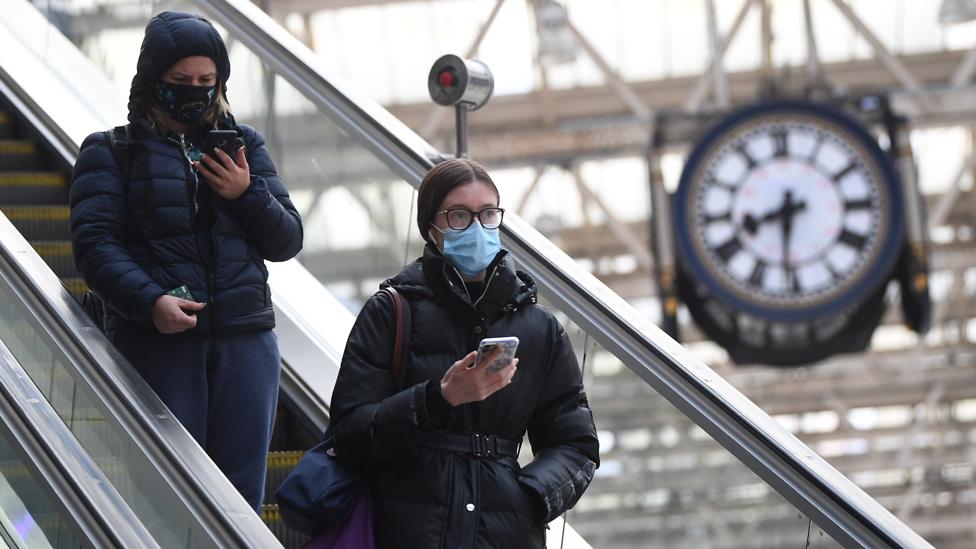
The R number for coronavirus has fallen to between 0.9 and 1 for the first time since mid-August, which means the epidemic is thought to be no longer growing.
'R' is calculated by the government's scientific advisers, external, and represents how many extra people each infected person passes the virus onto.
The aim is to keep R below 1 until a vaccine is rolled out.
During the first peak in the spring, R was thought to be around 3.
The latest estimate of the growth rate of the virus has also fallen, to between -2% and 0%, which indicates that the number of new infections each day is coming down.
On Friday in the UK, 521 deaths were reported within 28 days of a positive Covid-19 test, external. There were also 16,022 new cases reported - a 25% fall on the previous week.
However cases in some regions of England are still high, particularly the North West, the North East and Yorkshire and the Humber. When lockdown ends on 2 December, most of England will move into the two toughest tiers of restrictions.
An R or reproduction number of 1 means that, on average, every person with the virus will infect one other person.
So an R number between 0.9 and 1.0 means that on average every 10 people infected will infect between 9 and 10 other people, indicating it is shrinking.
With the four nations of the UK following different policies on restrictions, the government says the estimate for R for the whole of the UK has become "less meaningful in recent weeks".
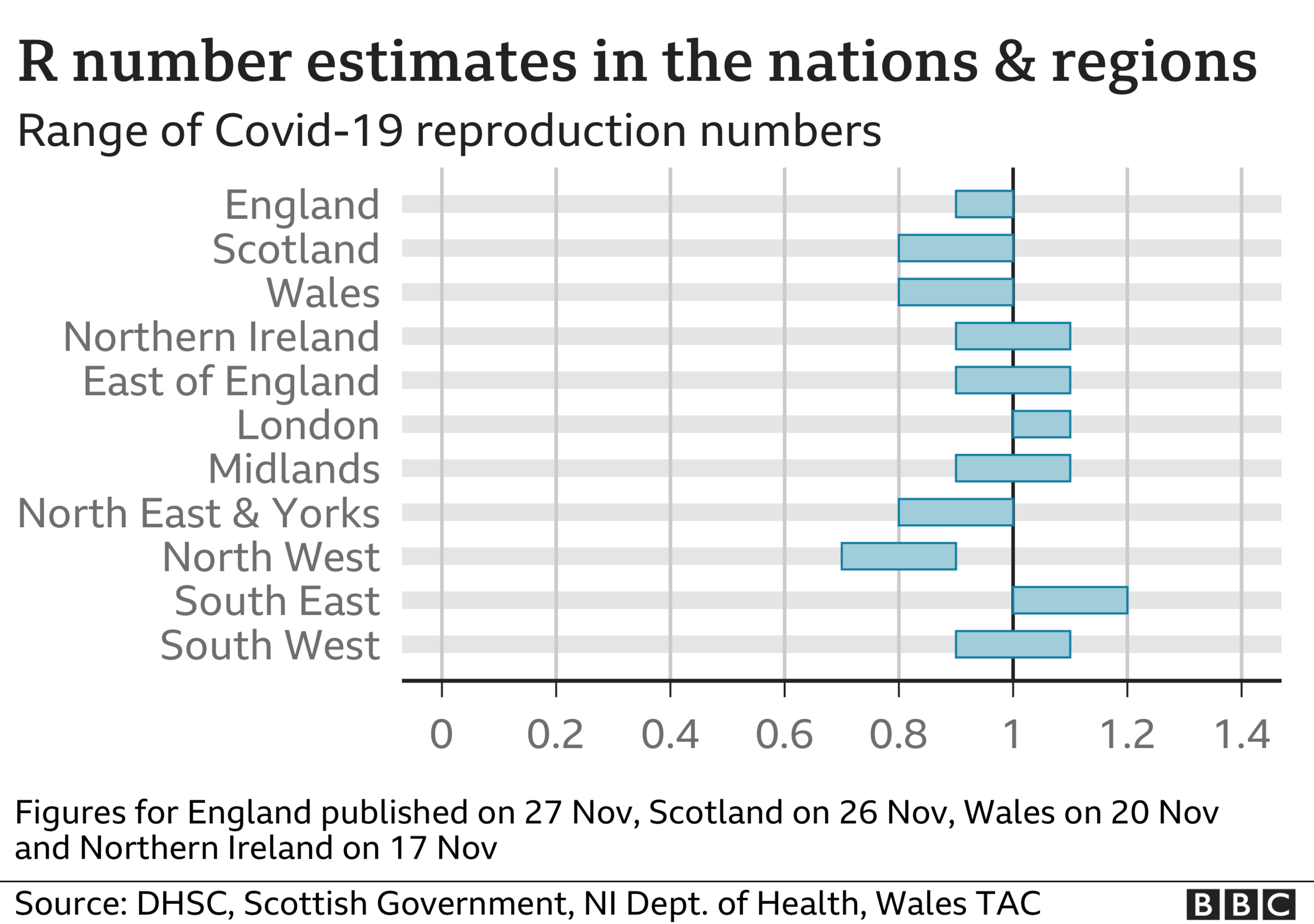
It says the impact of the second lockdown in England, which began on 5 November, cannot be fully evaluated yet, and adds that R "may be below 1 for all regions already" in England.
R is estimated using a range of data, including testing numbers, hospital admissions, intensive care deaths and estimates of how many people are infected in households across the country.
Scientists from different universities then use this data to estimate the spread of infections.
There is always a slight time lag in the R number of a matter of weeks - the latest estimate is based on data up to 24 November.
The UK government has said in the past that the R number was one of the most important factors in making policy decisions.
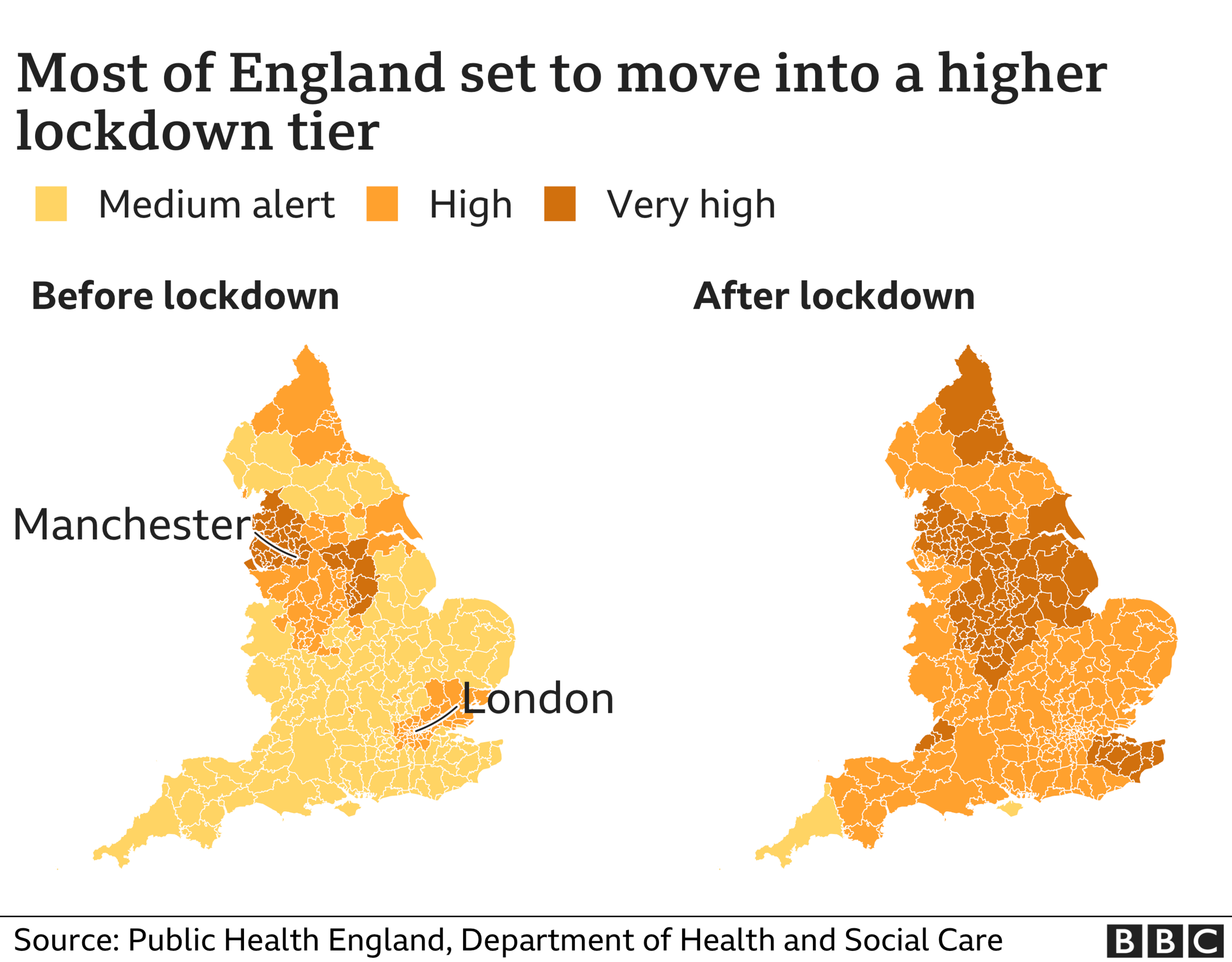
From Wednesday in England, more than 32 million people are due to be living under tier two restrictions, banning indoor meetings between households.
A further 23 million people will be placed under the highest - tier three - restrictions, which further limit contact between people outdoors.
Boris Johnson has defended the approach, arguing the country needs "simplicity and clarity" and the restrictions would "drive" Covid down until a vaccine is available.
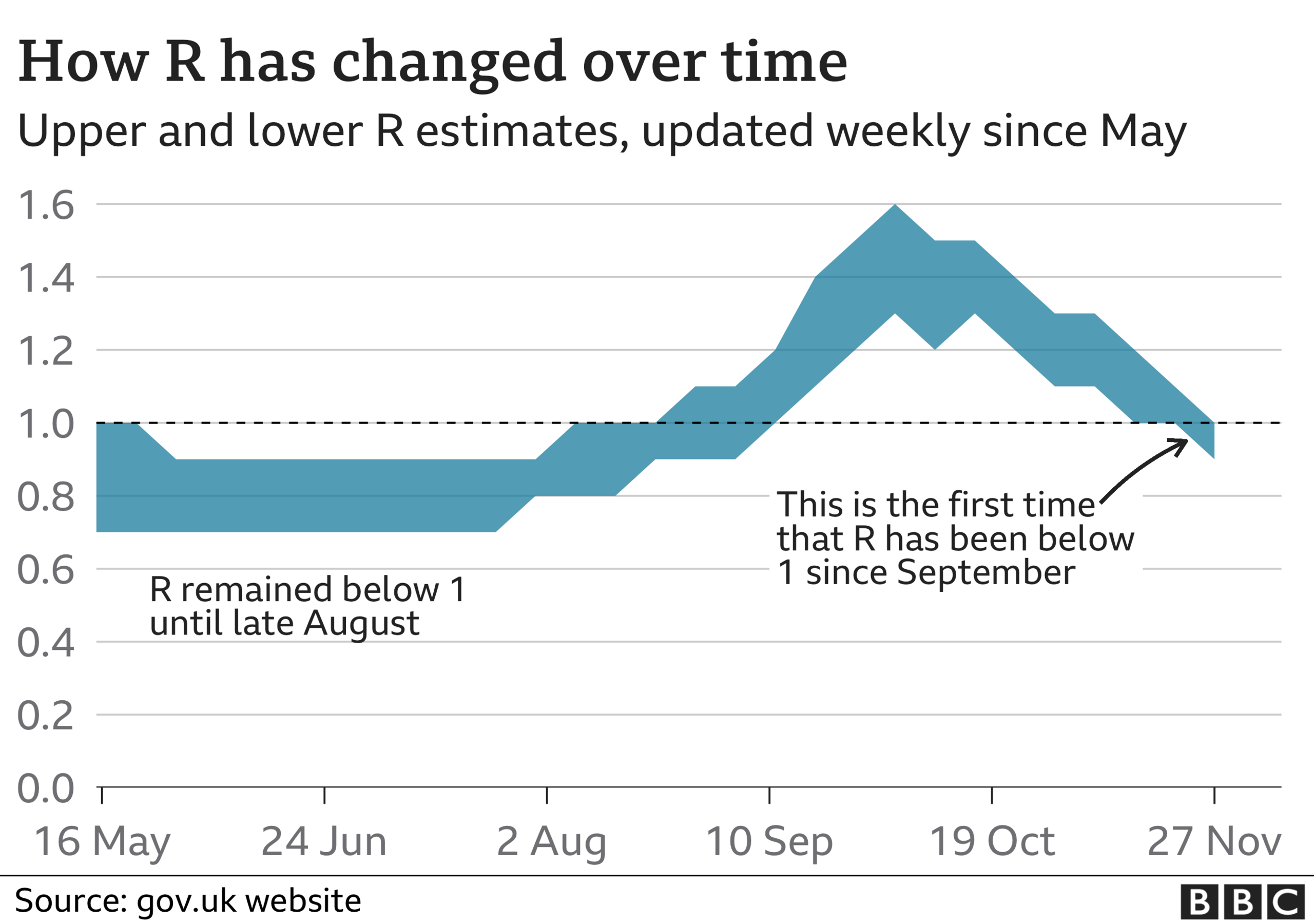
R was last below 1 on the 14 August
Prof Mark Woolhouse, professor of infectious disease epidemiology, from the University of Edinburgh, said the R numbers across the UK "may decrease further as the full impact of lockdown becomes apparent".
"It is worth noting that the falls in R began in the second half of September which may indicate that measures taken during that month did have some impact in some regions of the UK," he said.
However he added that the data raised the question "of whether the earlier implementation of measures short of full lockdown would have been sufficient to keep the epidemic in check and prevent local NHS Trusts from being overwhelmed."
